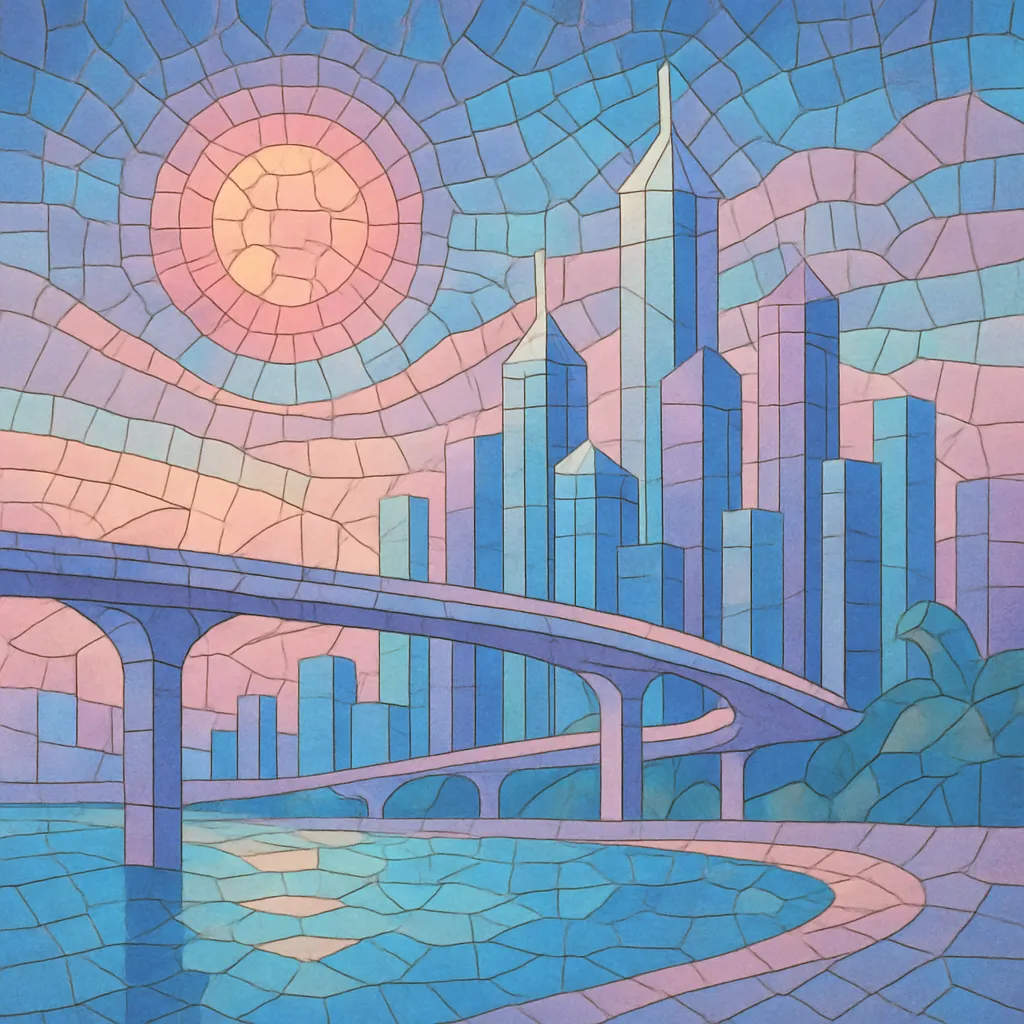
Utopian virtual is a bright, optimistic branch of vaporwave that imagines benevolent, high‑tech futures rather than dystopias. It swaps the genre’s usual ironic distance and heavy sample-chopping for glossy, largely original compositions built from plush pads, glassy bells, soft trance leads, and expansive reverb.
The style evokes idealized digital cityscapes, late‑night monorails, and neon rain—often in major keys or suspended harmonies that feel weightless. Grooves are understated and mid‑tempo, with a smooth, floating pulse closer to ambient trance and new age than to hip‑hop. Visuals and album framing typically lean into pastel futurism, 3D skylines, and hopeful cyberpunk aesthetics.
Utopian virtual emerged in the mid‑2010s within the broader online vaporwave ecosystem, crystallizing around the Dream Catalogue community. As vaporwave matured, some producers moved away from ironic, sample-heavy mall nostalgia toward forward‑looking, mostly original synthesis. The term “utopian virtual” became shorthand for this warm, aspirational, sci‑fi city mood—an imagined future of humane technology and endless night skylines.
Where classic vaporwave leans on chopped corporate muzak or decelerated pop, utopian virtual emphasizes new composition with shimmering pads, airy bells, soft trance plucks, and diffuse, long‑tail reverbs. Rhythms are gentle and steady, often 90–120 BPM with sparse percussion, side‑chained pads, and subtle four‑on‑the‑floor or half‑time pulses. Harmonies favor major 7ths, 9ths, suspended voicings, and slowly evolving progressions that feel weightless and unresolved—conveying perpetual ascent.
Mid‑2010s albums on labels like Dream Catalogue helped codify the sound—longform, cinematic pieces that evoked night drives through neon megacities. Artists cross‑pollinated with adjacent vapor/post‑vapor scenes, borrowing ambient trance spaciness and new age clarity while retaining vaporwave’s visual world‑building.
By the late 2010s, utopian virtual fed directly into the rise of dreampunk and other post‑vapor movements that prioritized world‑building, narrative ambience, and original synthesis over pure plunderphonics. Its lasting legacy is a hopeful, cinematic strain of vaporwave aesthetics that influenced contemporary wave and chillsynth producers seeking luminous, cloud‑like textures without abandoning club‑adjacent momentum.

